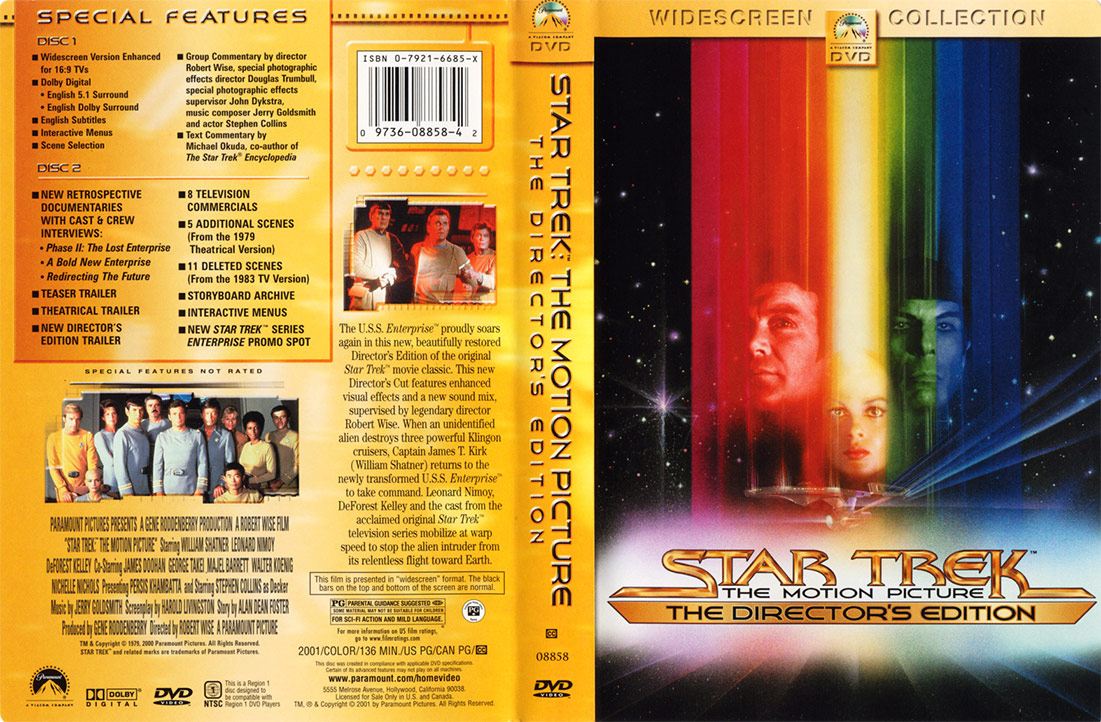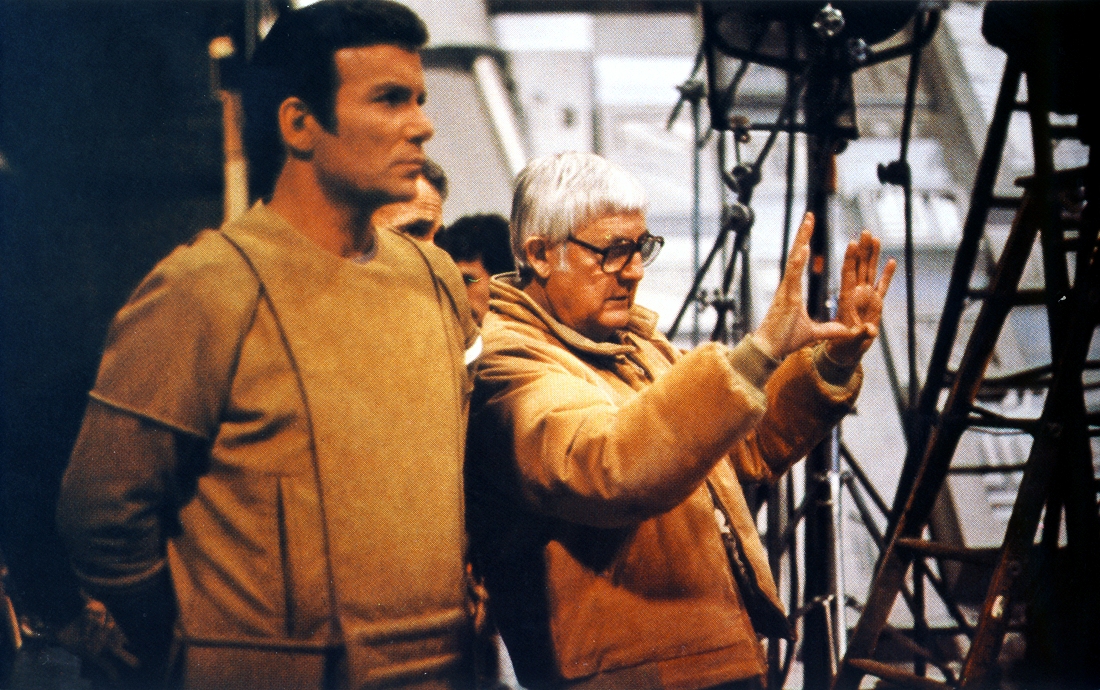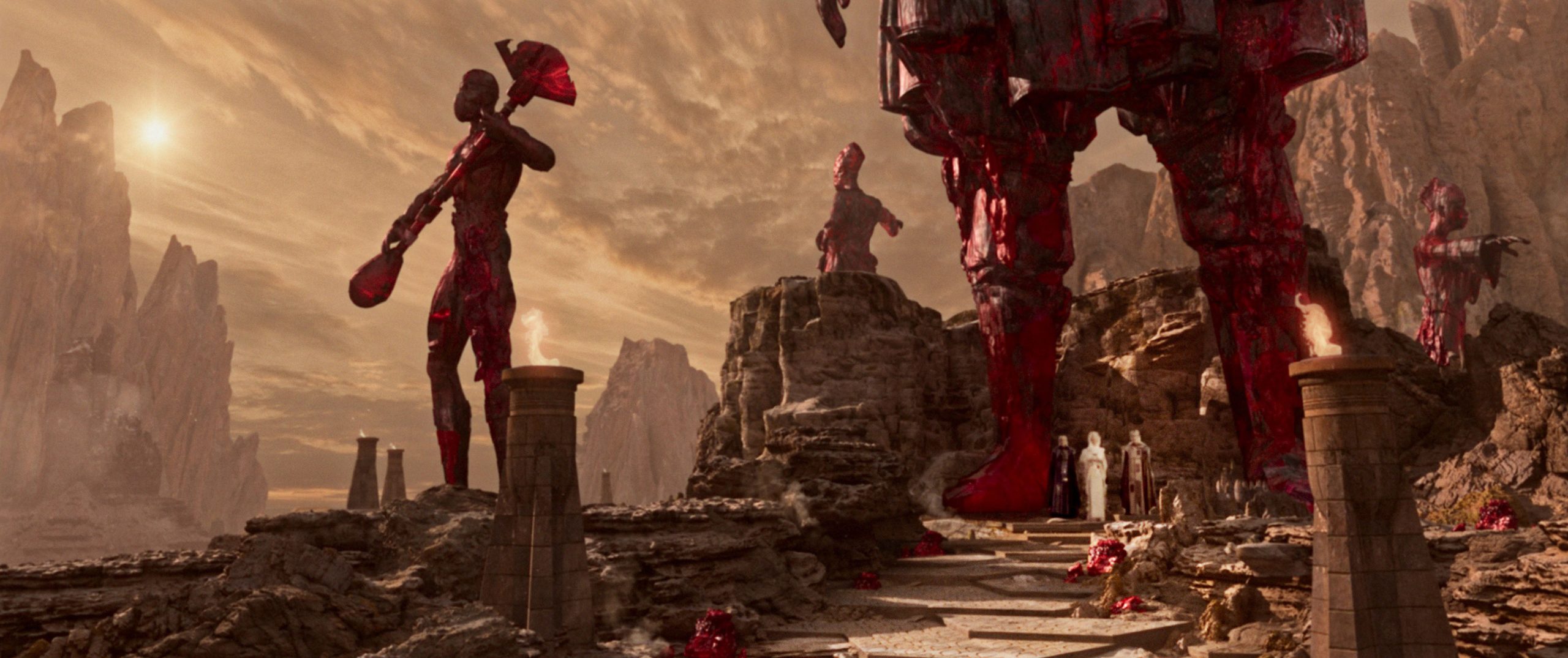The long-awaited remastered, 4K UHD edition of Star Trek: The Motion Picture — The Director’s Edition beams down to Paramount+ on April 5 after 20+ long years of fan desire.
Ahead of the arrival of this sorely-needed update, we had the opportunity to speak to producer David C. Fein, the man spearheading this 2022 return to Robert Wise’s final cut of the first Star Trek film.
TREKCORE: How did the 4K remaster for The Motion Picture Director’s Edition come about, 20 years after the original release on DVD? Was this something you had been hoping for originally?
DAVID C. FEIN: We did the film back then [in 2000] with [the original director] Bob [Wise]. It was wonderful that we were able to do it. We did it for standard definition, because that’s what the studio needed at the time. DVDs were what was successful for studios, but I made sure that the effects team at the time knew that our goal was film, and that our goal was always going to be for film.
I said, “Whenever you do work on anything on the film, you put it in the back of your mind that we’re going to do it eventually on film. If you have a corner you need to shave off, that’s okay — but know that if it’s something that we need to be seen on the big screen, don’t do it.”
We were prepared for this new version. The original idea was that the Directors Edition from 2000 would be our work print to show the studio and say, “Now you have this — let’s finish the film and put in on the big screen.” But it was probably a miscalculation of mine, in that I hadn’t realized that a big screen presentation didn’t make as much money as home entertainment at that time.
So when it released on DVD they said, “Thank you. We have what we want, but we’ll keep you in mind for the future.”

Then high-def came out, and of course, we wanted to try high-def and some talks happened, but it wasn’t cost-effective, because the amount of work that had to be done just to bring it to the next level wasn’t cost-effective, and also because the DVD was still around for many years.
Bob [Wise] was so thrilled with the 2000 version of the movie. He was so touched and thrilled, because even though as I said, it was the closest thing we could get we to what the goal was, the Director’s Edition on DVD was still so much more and worked so much better than the theatrical.
The Motion Picture was the film that got away from Bob. It was the film that he never had the time to properly finish, and even the moral and the purpose of the story was left out. Then on top of it, there was the TV version that came in, that had extra scenes he never wanted included in the movie. He didn’t ever want to have the theatrical and the TV versions of The Motion Picture be his legacy, without the Director’s Edition.

He sat me down one day, in the kitchen at his house, which we were on a nice little table we used to talk all the time. He said, “I have a serious conversation that I want to have with you.” I said, “Okay.” He said, “I need you to promise me, that no matter what, from now to eternity, you’re going to get this thing done.” He said, “I may not be here.” I said, “I need you to promise me.”
The hairs in the back of my neck were standing up! “Promise me that you’d make it happen, no matter what you had to do, because I can’t live with this being my legacy.”
It was so amazingly beautiful and refreshing when we finished the movie in 2000, and he smiled. There was something about that smile that stood for me as telling me that he was proud of the film. It was so precious for me. When he asked that, I said, “Of course,” I said, “I’ll forever do this.” Then we sat down and had a long talk about where the movie was, and where it could go. He said, “Even with the evolution of technology, always focus on the story. It doesn’t matter how we got there, make the story work.” We talked about many different aspects of it.
And that’s where we are today. Even though technology can do so much more, Bob’s request to focus on the story meant that as we approached this new remaster we were not working on polishing the film, but we were focused instead on storytelling and using every tool available to now make the movie as compelling, cohesive and engaging as it possibly can be.
We have a brand new 2022 movie, and the movie is exciting and there’s so much subtlety that you’ve never even known about, that there’s so much going on behind the scenes now.
TREKCORE: There have been a few changes to effect shots between the DVD version of the movie and this new remaster version — for example, some of the buildings around Starfleet Headquarters have been redesigned.
What philosophy did you bring to the task of making additional changes to this movie as you revisited it for this remaster?
FEIN: There’s a lot of questions that I’ve had about, “Did you just up-rez the previous effects?” If you had never seen a full-size car, but you had only a little Hot Wheels car, and I asked you go take that and reproduce it to the size of a car… it wouldn’t look very nice. It would look like a giant Matchbox car but it would lack all of the detail that’d make a beautiful car.
That’s what we had to come back and look at with the special effects from 2000 when we were doing this the first time. We had to look at what information is there, because instead of projecting on a standard definition sized postage stamp, we’re doing it at full-screen! That’s where returning to everything, we needed all of that extra detail and all of that extra information, to really satisfy the visual splendor of what we’re looking at.

Then, there was a lot of great benefits to things that just showed up on our doorstep like magic. The scene of Spock going to the Vulcan elders — in the 2001 version in the wide shot, they were all CG. This time we found a plate, and the elders and Spock, the actual elders standing there from the original plate that was shot in the tank back in 1978.
It was another wonderful experience with that, but every time we went back, we had to say, “What was the focus? What was the goal? What were things supposed to look like in the larger scale?” There are places in the film now where you would not have been able to see story detail, and it’s all subtle.
That’s the point — it ain’t beautiful effects shots, and it goes for sound and everything else on this film. If you don’t notice it’s different, it’s working. There’s a place in the film where V’Ger opens its orifice and the Enterprise starts going in, and finally when you get in, there are stars. For a moment, you stop and go, “Did they leave?” You still have the hot, bright north star, but it’s that space that just gives you a little bit more. But that would not have even been visible, the star levels on the standard version.
There’s so much more to today’s presentation of the movie versus the original Director’s Edition, and using it to evolve the storytelling was the goal, not just polishing it, which would be a restoration.

TREKCORE: You talked about your commitment to Robert Wise around finishing the movie — obviously that was much easier for the 2001 version because he was still with us.
How did you approach honoring his wishes for this new edition of the film without being able to consult with him directly?
FEIN: I stayed with him for many years after the original Director’s Edition project was finished, and we had many conversations about this to begin with. The thing that wasn’t really established back then — but was a fact was that one of the greatest things about Bob and any great filmmaker knows this, is that if you want the best story, you have to have the best team.
Film is a collaborative medium. Bob didn’t do the Director’s Edition in a vacuum. He collaborated with me and my team. We brought to him the ideas that we wanted to bring into the story, because I did grow up on Star Trek. I do know the characters, and I know great storytelling because I love to be told a great story, so I love telling a great story.
That’s one of the things that he and I connected with was, how wonderful it is to find cool different ways to subtly go there. We discussed things that only now are showing up in the film. There’s a lot of subtlety; V’Ger is its own little world in this film. It’s not on screen, but you’ll get it if you listen and pay attention.

Bob was my mentor, and I helped him with the story. He’d helped me learn more about my skill. I had a great team that we picked together, and we worked with. For this version, we were repeating everything we had done before for the 2001 Director’s Edition, but now I focused on how to improve it, to amplify the story, and to finish the things we couldn’t finish. There were so many rushed aspects to the production of the original film in 1979 to begin with.
The thing that people don’t know is how rushed the color grading on the ’79 film was — it’s the thing that we didn’t talk about, because it was hard to finish until now. You see everybody who loves the film in the way that it looks in the theatrical edition, loved something that was done in four days.
All the color grading for the theatrical was done in four days, which is not a lot of time! We were able to bring a little bit closer to what it should be when we did the original director’s edition. This time around, though, the goal from the start was to create a new digital negative and a new digital theatrical Dolby Atmos mix.
Any other film has the ability of going to any format in the future and not have that same problem. The color grading in this new edition of the movie is specific, and is different than what everybody has seen for all those years because it wasn’t finished at the time. I understand people’s love and appreciation for how it looked, and the theatrical edition is available for anyone to watch in the highest presentation possible.

This was the time to revisit that, though, through the talks I had with Bob — but also the sensibilities of what I was going for. We’ve improved the color grading of the Klingons, which are now in a dark and grungy space, because their ships are different from what everybody else’s ships are.
And for the Federation, which is clean and new, we found and brought as much color to bring into it as we could. Plus with HDR, being able to get those darkness levels and the color levels and really elevate the story to a level that nobody else would do.
Most people, if they had a film from 43 years ago, would say it can only be “this.” That’s not the point. I was always encouraged — and in my heart I always knew — this was a new opportunity to make it be the best film it can be now because when I’m sitting in the theater, I want to float away into the story. I want to feel compelled.
I want to feel drawn in, in a state where I am, and just go into it and just experience that and through the sound, which is absolutely encompassing with the new audio mix. You can now feel the wormhole. You feel the probe on the bridge!
TREKCORE: You and the team must have been excited to finally get your chance to revisit this project after so many years!
FEIN: It’s wonderful. I’m thrilled. We had the chance, and it’s so much more now. It really is. We have to make sure everybody sees this film now — it’s a new film, a great new experience, more than before.
![]()
The newly remastered Star Trek: The Motion Picture — The Director’s Edition arrives in 4K UHD format April 5, exclusively on Paramount+. The new edition of the film will be screened in theaters in the United States in May, followed by a 4K Blu-ray physical release this September.
